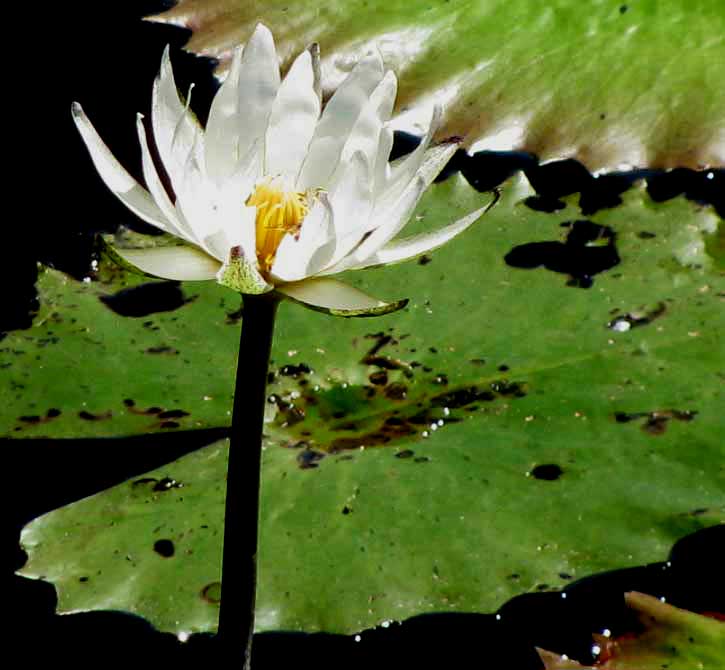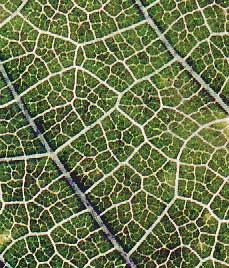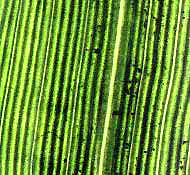 This Dotleaf Waterlily, Nymphaea ampla is neither a monocot nor a dicot
This Dotleaf Waterlily, Nymphaea ampla is neither a monocot nor a dicotIn the old days all flowering plants, or angiosperms, were regarded as either monocots or dicots. On our New Concepts about Monocots & Dicots page, we see that the world of flowering plants is much more complex than that. Water lilies, magnolias, laurels, and other important flowering plants are neither.
Still, the monocot/dicot concept can be useful because it helps us visualize two very large flowering-plant subdivisions. That's important because species in these subdivisions share certain features. If we've learned that leaf venation in monocots is one way, but in the dicots it's another, that's helpful during the identification process. Here are some of the two groups' general features:

Dicots include nearly all our trees, bushes, vegetable-garden plants (not corn), and most of our wildflowers (not irises and lilies). Dicot leaves are usually net-veined, as in the close-up of the veins in a wild grape leaf at the left. Notice that the larger veins are thicker and straighter, but as veins get smaller and smaller, they tend to snake around.

Monocots include all grasses and glasslike plants, such as sedges and rushes, plus lilies, irises, amaryllises, and some other plant types. Usually, but not always, monocots possess parallel-veined leaves, as typified in the simple blade of fescue grass shown at the right.